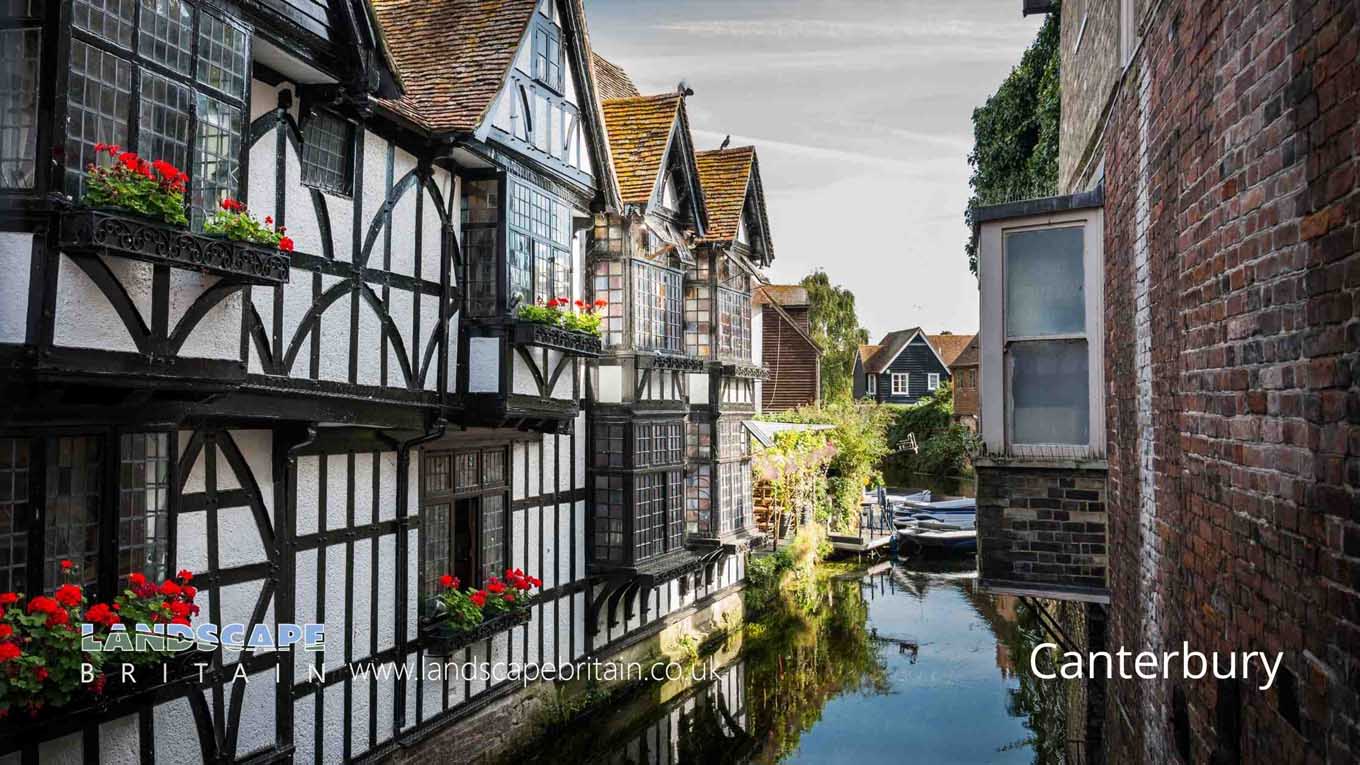
Canterbury
Canterbury
Canterbury is a historic, cathedral city in Kent. Canterbury is a popular tourist destination and boasts many well-known historical sights such as Canterbury Cathedral.
Famously a site of pilgrimages Canterbury is well-known from The Canterbury Tales, a collection of stories written in Middle English (the predominant literary language in England from approximately 1300 to 1500 AD) by Geoffrey Chaucer (c1342-1400).
Canterbury is also a popular place for business, home to the University of Kent, Canterbury Christ Church University and Canterbury Technical College.
Canterbury has been occupied from Neolithic times (the Mesolithic or Middle Stone Age being c10500 BC - c4000 BC) as evidenced by archaeological finds in Canterbury such as flint arrowheads and Bronze Age artefacts. Canterbury is thought to take its name from the Brythonic Cair Ceint meaning ‘Fort or City of the Legion’ which was its Roman name, probably due to it being a fortress during the invasion of Britain in AD 43.
Created: 30 October 2021 Edited: 29 November 2023
Canterbury
Local History around Canterbury
There are some historic monuments around including:
Bowl barrow situated in the southern part of Iffin Wood, 100m east of New House LaneArchbishop's Palace, BekesbourneThe GuildhallBowl Barrow 350M E.S.E. of Capel farm in Mounts WoodDispersed medieval settlement remains and a Roman building immediately south west of St Cosmus and St Damian's ChurchSite of church and graveyard of St Mary de CastroCity wall (site) and ditch on Rheims WayBlackfriarsChristchurch Priory and Archbishop's PalaceDovecote at Burnt House FarmSt Augustine's monastic conduit house, King's ParkMedieval wall of Black Prince's ChantryDane John Mound and Roman and medieval remains in Dane John GardenGreyfriars, CanterburyCanterbury city wallsBowl barrow 400m north-east of Buckholt Farm in Mounts WoodSite of St Radigund's HospiceCanterbury CastleBigberry campConduit House, NE of Victoria married quarters, Military RoadPart of the Tyler Hill medieval pottery and tile industryHorton ChapelBowl barrow situated in the northern part of Iffin Wood, 120m east of New House LaneAnglo-Saxon cemetery on Hanging Hill, Bridge, immediately south west of Watling StreetRoman remains on Marlowe car parkRoman cist burials in Gorsley WoodSt George's Church towerRoman site, Butchery LaneVacant land within Roman walls in Adelaide PlaceSt Augustine's AbbeyTower of St Magdalene's ChurchHospital of St John the BaptistCity wall and bastion in Westgate GardensAbbot's Mill and sluice at Blackfriars StreetA deserted medieval manorial settlement and associated earthworks in Iffin WoodA pair of bowl barrows in Clowes Wood.Wildlife in and Around Canterbury
Mammals found in Canterbury
There have been 38 species of mammals recorded in the canterbury area.
| (Nyctalus/Eptesicus agg.) |
| 55 Khz Pipistrelle (Pipistrellus pygmaeus) |
| Badger (Meles meles) |
| Brown Hare (Lepus europaeus) |
| Brown Rat (Rattus norvegicus) |
| 45 Khz Pipistrelle (Pipistrellus pipistrellus) |
| American Mink (Neovison vison) |
| Bank Vole (Myodes glareolus) |
| Brown Long-Eared Bat (Plecotus auritus) |
| Common Dormouse (Muscardinus avellanarius) |
Tap here for more mammals found in and around Canterbury
Fish found in Canterbury
There have been 26 species of fish recorded in the canterbury area.
| Atlantic Salmon (Salmo salar) |
| Bream (Abramis brama) |
| Brown Trout (Salmo trutta subsp. fario) |
| Bullhead (Cottus gobio) |
| Chub (Squalius cephalus) |
| Barbel (Barbus barbus) |
| Brook Lamprey (Lampetra planeri) |
| Brown/Sea Trout (Salmo trutta) |
| Carp (Cyprinus carpio) |
| Dace (Leuciscus leuciscus) |





